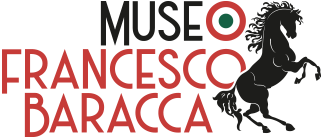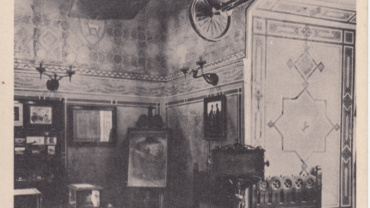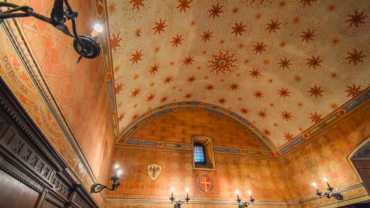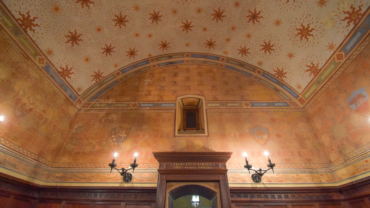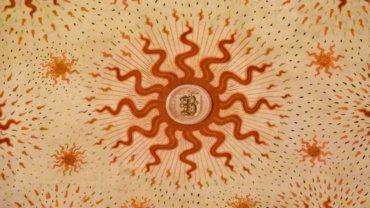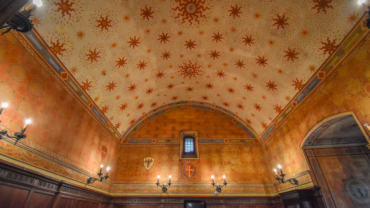Sala Baracca
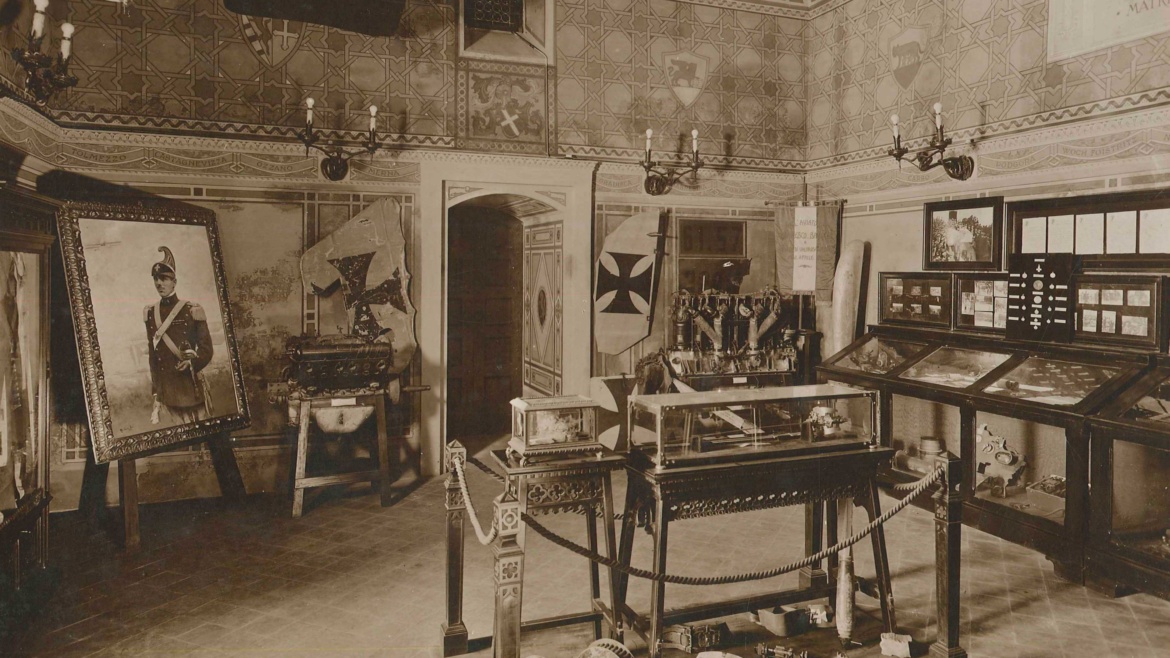
Established by the Municipality in 1924 and opened to the public in June 1926, the Museum had as its first location a large, high, square-shaped room, which still occupies the lower part of the tower on the south side of the Rocca Estense in Lugo. Frescoed in the early Renaissance style by artist Lucio Benini, today’s Sala Baracca features a decorative theme inspired by the Castello Sforzesco in Milan, characterised by an elegant barrel vault with Leonardesque friezes and the initials of the Hero.
On the walls, the artist developed other 15th-century motifs, with emblems of cities and territories that were particularly significant to Baracca and Italy as a whole during the First World War: Venice, Rome, Trento, Trieste, Lugo, Istria, Dalmatia, Fiume and Gorizia.
At the top of the east and west walls, Benini used the prancing horse and the griffin of the 91a Squadriglia as additional decorative elements of the room.
Above the postern runs a frieze divided into thirty-four compartments, each containing a name of the places where Baracca achieved his victories during the Great War. On the west wall, in gilded letters in relief, the dedication “A Francesco Baracca Matrice Ferrigna” (“To Francesco Baracca, ferrous matrix”), a quotation from the funeral oration by Gabriele d’Annunzio, can be read, while the south wall is richly decorated with the emblems of the noble families Biancoli and Baracca.
The period wooden furnishings were made by Antonio Turri, author of the same in the current Museum venue, Casa Baracca.
Inaugurated on the 16th of June 1926, in the presence of Prince Umberto di Savoia, the Museum hosted the first core of exhibits, mainly made of war relics collected by Francesco, and it was enriched by a further family donation in 1951.
Central element of the Museum’s equipment since its origins, the SPAD VII S2489 served in the 91a Squadriglia Caccia between late 1917 and early 1918. Built in 1917 by the French company Societé Pour l’Aviation et ses Derivés in its factories in Blèriot, the biplane was donated to the Municipality of Lugo when the Centocelle airfield (Rome) was entitled to Francesco Baracca on the 21st of April 1919. In the Museum’s first location, the plane hung from the ceiling. It underwent two restoration works, the first one in the 1960s by Air Force technicians, the second one in 1990 by the Turin section of the group Amici Velivoli Storici (Friends of Historical Aircraft).
In the same year, the Museum was closed and reopened three years later, in 1993, in the Asso’s birth house. The Sala Baracca currently hosts exhibitions, conferences and meetings organised by the municipal administration and associations.
Podcast
The Baracca Museum represents the starting point of a city itinerary that includes the Monument, designed and concluded in 1936 by sculptor Domenico Rambelli from Faenza and considered as one of the greatest expressions of Italian Twentieth Century culture, as well as the Sala Baracca in the Rocca Estense, first seat of the Museum, decorated with frescoes by painter Lucio Benini and wooden furnishings by Antonio Turri, both artists from Lugo.
In addition, in the city cemetery it is possible to visit the burial Chapel of the Baracca family, where the majestic bronze sarcophagus enclosing the Ace’s remains may be admired. The apsidal niche, ideated by artist Roberto Sella, presents a mosaic decoration inspired by Liberty and Art Decò styles


